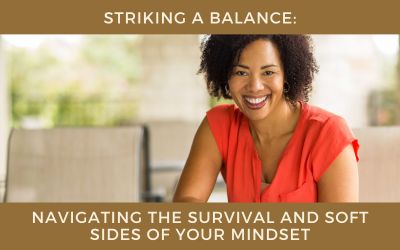Whether we learned them as a child or in a series of unhealthy relationships, there are certain habits we developed when in survival mode that just don’t work when it comes to healthy relationships. Being aware of our survival patterns helps us check ourselves so they don’t continue to be our norm.
It will be scary to leave these habits behind and hard to break them at first because they’re all you’ve known for quite some time. Your inner child might even depend on them to keep her safe. It’s up to you to show her a different way by teaching her a new way to respond instead of reacting to things.
Often, when we face challenging or threatening situations, our natural survival instincts kick in. These instincts can lead us to develop coping mechanisms and habits that help us navigate those situations. However, these habits might not be helpful or healthy when it comes to building positive relationships.

For example, if someone grew up in an environment where they had to be constantly on guard or defensive, they might carry those habits into their adult relationships. These patterns could include avoiding vulnerability, being overly reactive, or not effectively communicating emotions. While these habits might have been necessary in the past, they can hinder the development of healthy connections.
Recognizing these survival patterns is the first step toward change. It’s important to become aware of how these habits manifest in your behavior and how they might affect your relationships. Over time, working on replacing these patterns with healthier responses, such as open communication, active listening, and setting boundaries, can lead to more fulfilling and positive relationships.
Below are six ways you can heal your way out of survival mode.
Step 1: Self-Awareness
The first step towards healing is becoming aware of the survival patterns that may be holding you back. Take time to reflect on your behaviors and responses, and identify those that hinder personal growth or harm your relationships.
Step 2: Embrace Fear and Difficulty
Understand that breaking these ingrained habits can be intimidating, but personal growth often requires stepping out of your comfort zone. Embrace the discomfort and face your fears head-on as you work to change these patterns.
Step 3: Connect with Your Inner Child
Explore your inner child– the part of you that clings to these survival patterns for safety. Delve into your past experiences and explore how they may have influenced your current behaviors.
Step 4: Teach a New Response
To heal and build healthier relationships, focus on teaching your inner child new ways of responding to challenges. Instead of reacting defensively, practice responding with understanding, empathy, and the establishment of healthy boundaries.
 Step 5: Make Conscious Choices
Step 5: Make Conscious Choices
Recognize that even if you feel trapped in survival mode, you have the power to make conscious choices. Decide to prioritize joy, self-care, and overall well-being over mere survival instincts.
Step 6: Seek Support and Encouragement
Remember that you don’t have to go through this healing journey alone. Reach out to friends, family, or professionals who genuinely want to see you succeed. Surround yourself with a support system that encourages your growth and well-being.
Breaking these habits can indeed be challenging, as they have become ingrained over time. However, acknowledging that they no longer serve you and actively seeking new ways to respond can create a positive shift. It’s like teaching your inner child to adapt to a safer and healthier environment, showing her that there are better ways to navigate relationships that don’t rely on survival tactics. Remember, change takes time and effort, but the result can lead to more satisfying and meaningful connections. By following these steps, you can gradually transition out of survival mode, heal emotional wounds, and foster healthier relationships with yourself and others.

 Step 5: Make Conscious Choices
Step 5: Make Conscious Choices

